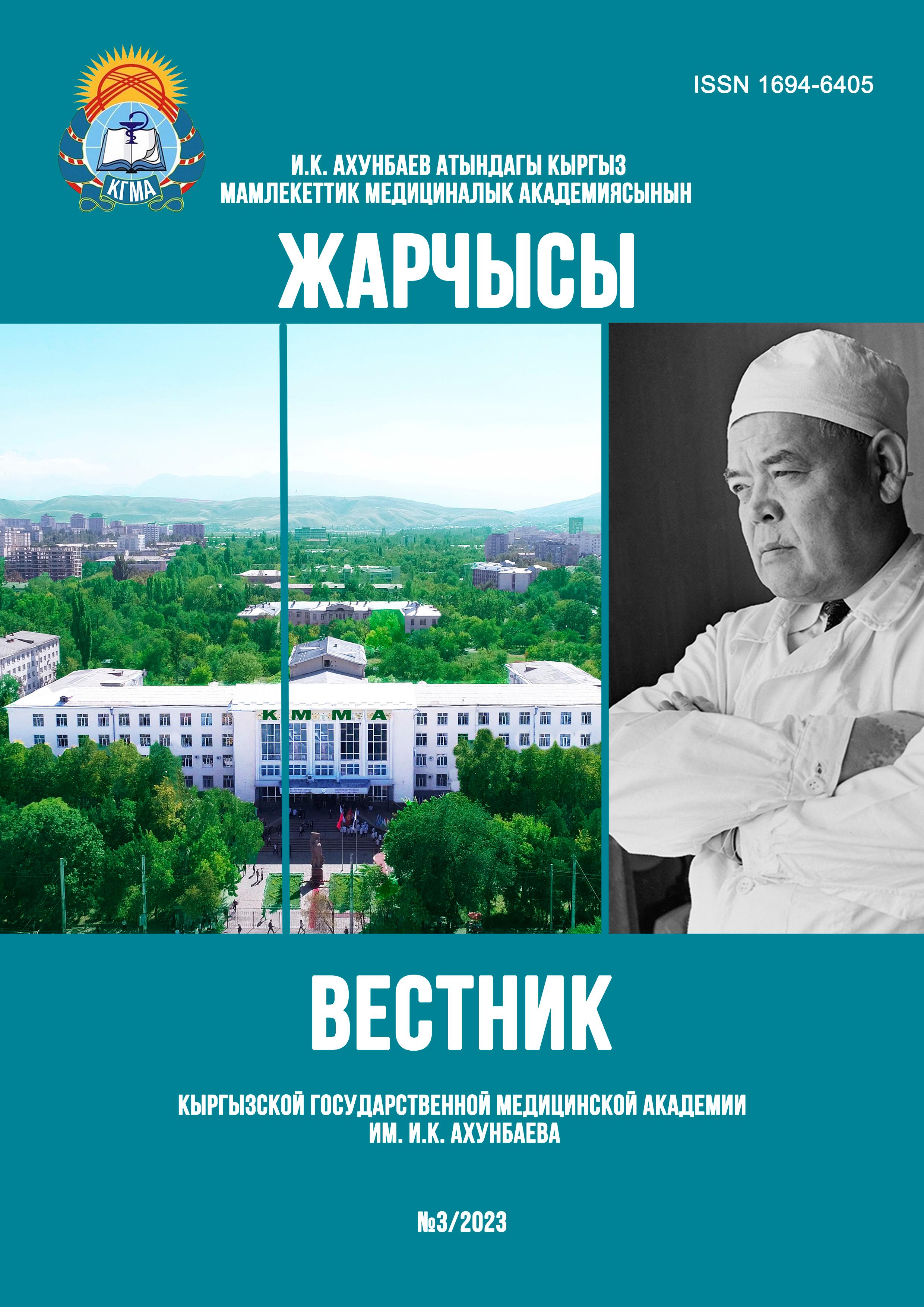RESULTS OF SIMULTANEOUS SURGERY IN UROLOGY AFTER APPLICATION OF THE DEVELOPED ALGORITHM FOR SELECTION OF THE VOLUME OF SURGERY IN PATIENTS WITH COMBINED SURGICAL DISEASES
DOI:
https://doi.org/10.54890/1694-6405_2023_3_143Abstract
Currently, there is an increase in the number of comorbidities requiring surgical treatment, while simultaneous operations for urological diseases are performed quite rarely due to a number of organizational problems. Particularly relevant are the indications for simultaneous operations, the sequence of their implementation and the management of the postoperative period. The purpose of the study: to evaluate the effectiveness of simultaneous surgical interventions in patients with urological diseases in combination with surgical and gynecological pathologies.
Material and methods of research: a study of the "case-control" type with an assessment of the effectiveness of the results of treatment of 140 patients with diseases of the genitourinary system in combination with pathology and other organs. The choice of the scope of the operation was determined according to risk criteria. Conclusion. Simultaneous operations in urology are possible in the presence of concomitant diseases requiring surgical treatment. The volume of surgery for simultaneous operations should be determined based on risk criteria. The frequency of postoperative complications during simultaneous operations is statistically significant (p≤0.05) in 1.4 times less (7.2%) in comparison with the group of patients with sequentially performed operations (10%). Simultaneous operations performed for urological diseases in combination with surgical and gynecological ones slightly increase the duration of the operation and blood loss, while preventing repeated hospitalizations and, accordingly, material costs for both the patient and the state as a whole.
Keywords:
urogenital system, co-operation, operational treatment, simultaneous, isolated operation, complications.References
1. Абедов С.М., Джумабеков А.Т., Жарменов С.М. Хирургическое лечение при сочетанном билиоуролитиазе. Вестник хирургии Казахстана. 2012;1:80-81. [Abedov SM, Dzhumabekov AT, Zharmenov SM. Surgical treatment for combined biliourolithiasis. Bulletin of Surgery of Kazakhstan.2012;1:80-81. (in Russian)].
2. Усупбаев А.Ч., Монолов Н.К., Адиев А.Т. Опыт лапароскопических операций в Республиканском научном центре урологии Кыргызской Республики. Вестник КГМА им. И.К. Ахунбаева. 2017;3:76–80. [Usupbaev AC, Monolov NK, Adiev. Experience of laparoscopic operationof the Republican scientific centre of urology of the Kyrgyz Republic. Vestnik KGMA named after I.K. Ahunbaev. 2017;3:76–80. (in Russian)].
3. Шаршенов А.К., Маматов Э.А., Салыбаев А.Д. Определение факторов риска при симультанных операциях. Центрально-Азиатский медицинский журнал. 2004;Х(2):218-220. [Sharshenov A.K., Mamatov E.A., Salybaev A.D. Determination of risk factors in simultaneous operations. Central Asian Medical Journal. 2004;X(2):218-220. (in Russian)].
4. Kamimura Y, Fukuda M, Egawa M, Kosugi I, Ohtake H. Nihon Hinyokika Gakkai Zasshi. 2011;102(4):633-637. https://doi.org/10.5980/jpnjurol.102.633
5. Torre G, Barusso G, Chernobilsky V, Borghi M, Montes de Oca L, Becher E. Outpatient simultaneous treatment of benign prostatic hyperplasia and bladder lithiasis with GreenLight™ and holmium laser. J Endourol. 2012;26(2):164-167. https://doi.org/10.1089/end.2011.0249
6. Иманкулова А.С., Чынгышпаев Ш.М., Кочоров О.Т. Периоперационное использование антибиотиков при абдоминальных операциях. Вестник КРСУ. 2010;10(12):86-90. [Imankulova AS, Chyngyshpaev ShM, Kochorov OT. Perioperative use of antibiotics in abdominal operations. Bulletin of the KRSU. 2010;10(12):86-90. (in Russian)].
7.Токтогазиев Б.Т., Оморов К.Р., Миклухин Д.С. Лапароскопический метод лечения сочетанного эхинококкоза печени большого сальника. Клинический случай. Здравоохранение Кыргызстана 2022;1:72-76.[Toktogaziev BT, Omorov KR, Mikukhin DS. Laparoscopic method of treatment of combined liver and greater oil echinococcosis. Clinical case. Health care of Kyrgyzstan. 2022;1:72-76. (in Russian)]. https://doi.org/10.51350/zdravkg2022311072







